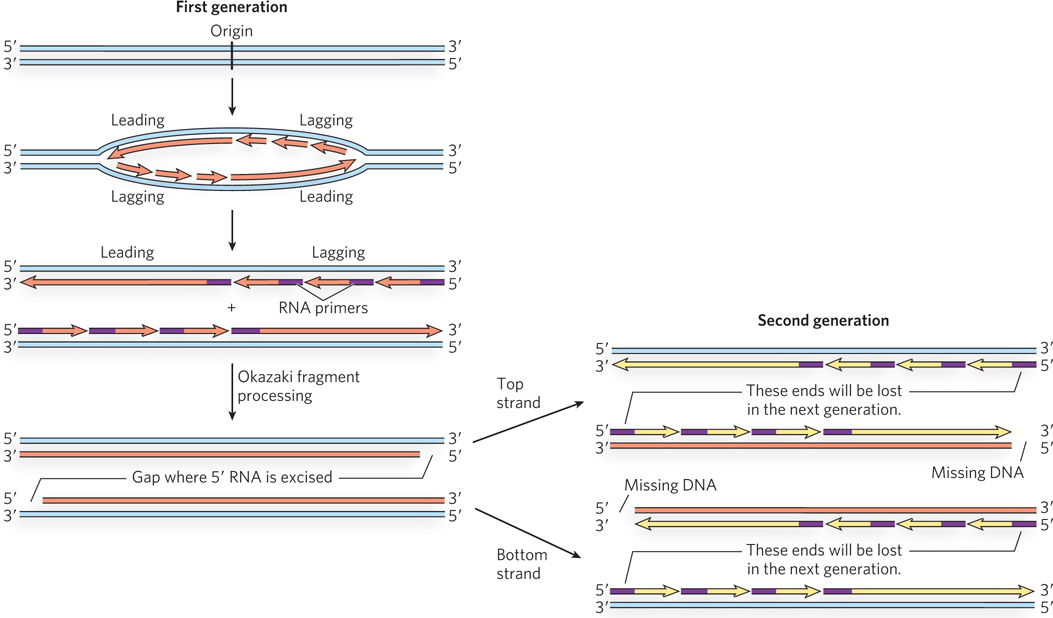
The end replication problem in linear chromosomes. Just two rounds of chromosome replication are shown here. In the first generation of replication (left; red indicates new DNA), lagging- e- e- t- e-